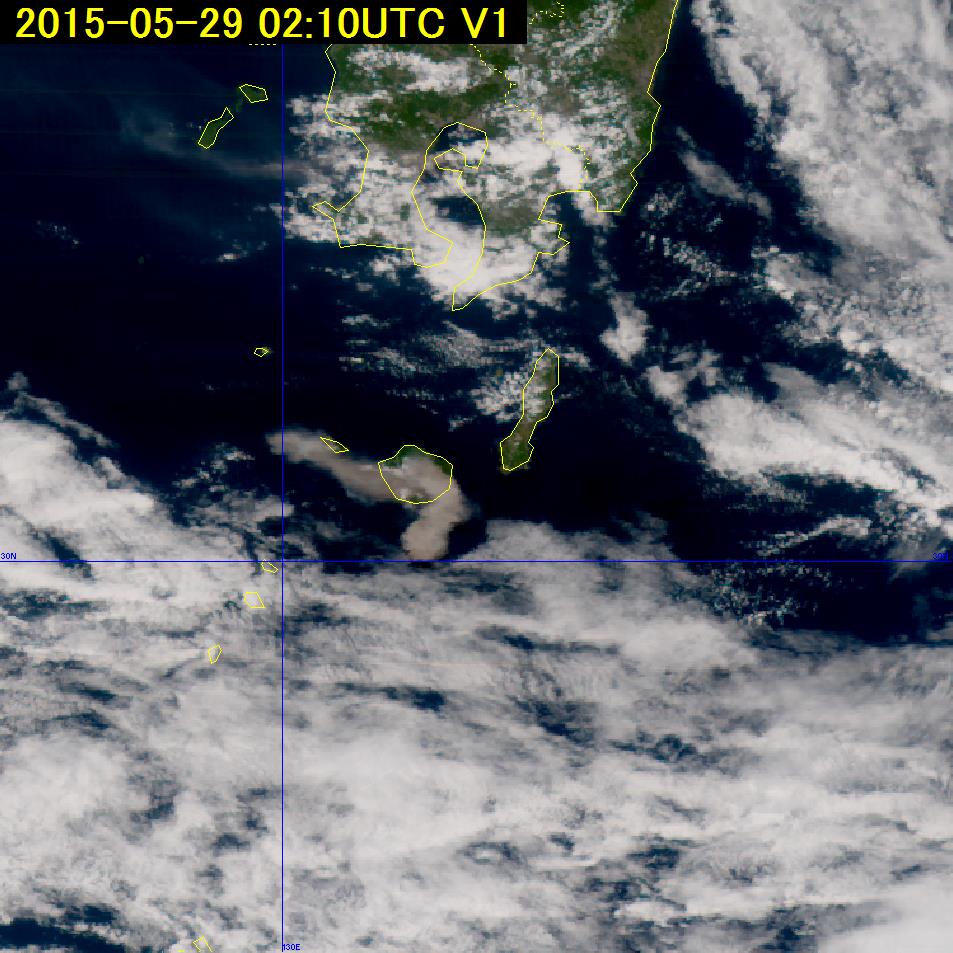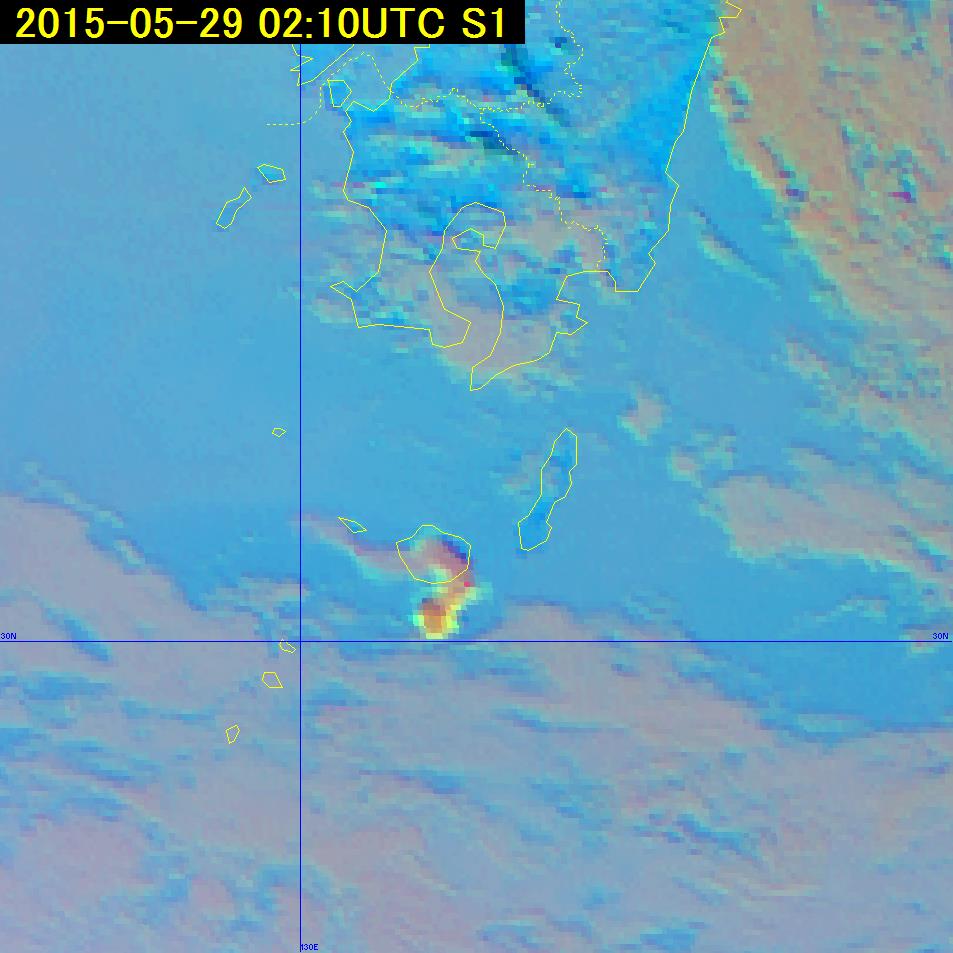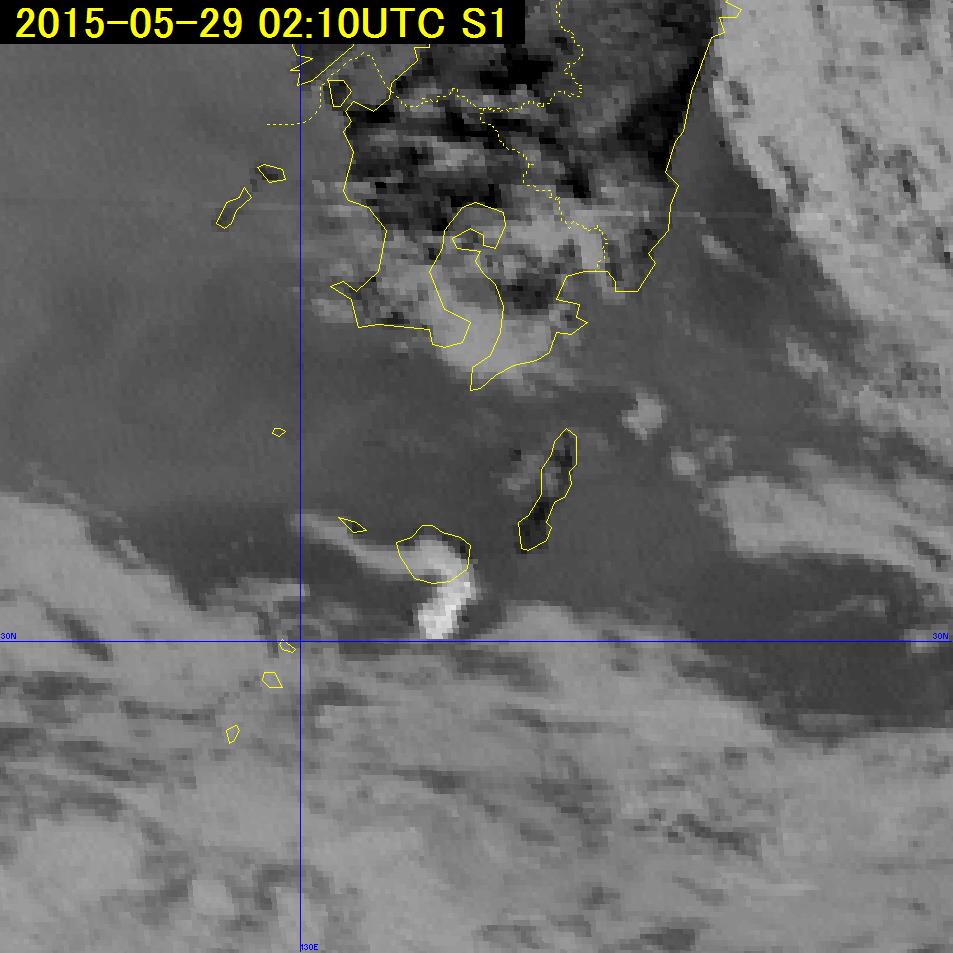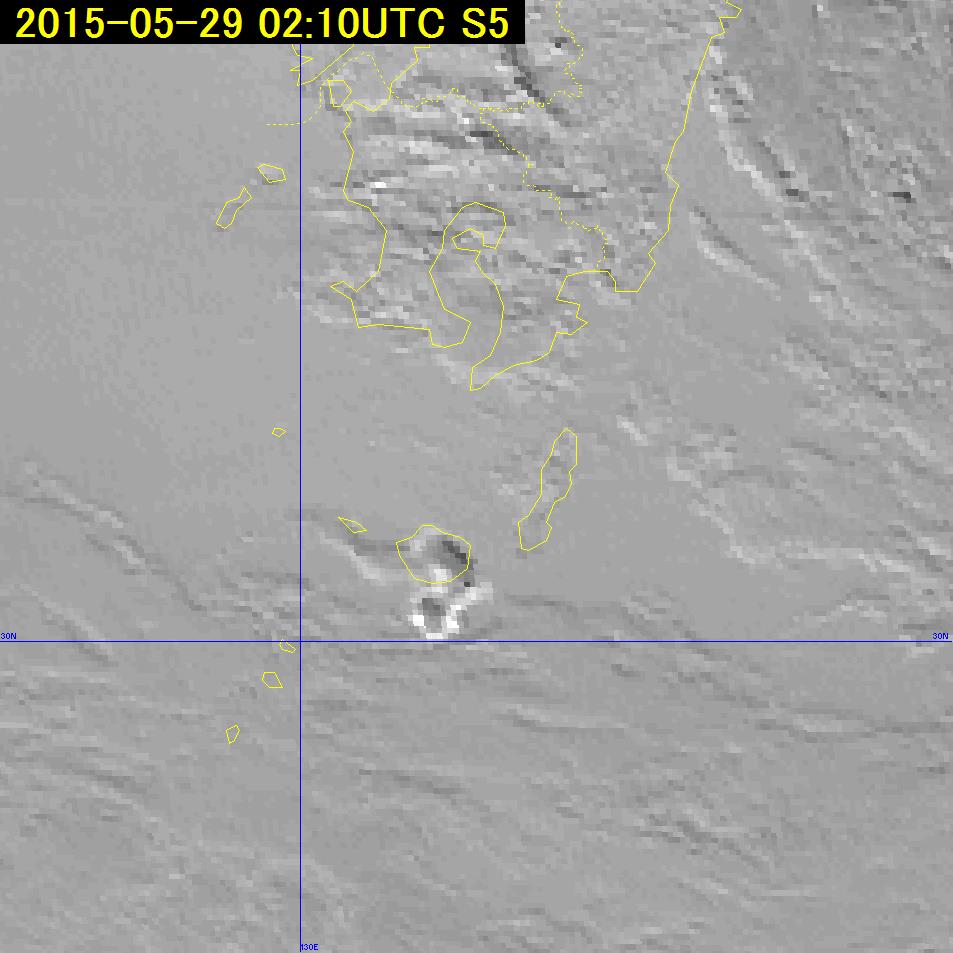Volcanic Plume Monitoring
Volcanic plumes caused by eruptions contain harmful ash and gas that are dispersed by wind. As volcanic ash can damage aircraft engines, the movement of such plumes is monitored using a combination of Himawari-8/9 data to support aviation safety.
Figure 1 shows a True Color Reproduction image of a volcanic eruption on Kuchinoerabu Island at 02:10 UTC on 29 May 2015. Volcanic plumes are not clearly distinguishable from surrounding clouds in monochrome visible imagery, but brownish plume content can be seen migrating westward and east-southeastward in a visible image combination.
In the Ash RGB composite image of Figure 2, a clear distinction is seen between volcanic ash and volcanic gas. This was produced by combining imagery showing the Band 13 ? Band 15 brightness temperature difference (BTD; red), which is small in the presence of volcanic ash (Figure 3) and the Band 13 ? Band 11 difference (green), which is small in the presence of volcanic gas (Figure 4). In the Ash RGB image (Figure 2), volcanic ash is shown in magenta and volcanic gas in yellow-green, and areas where both are present are shown in yellow.



